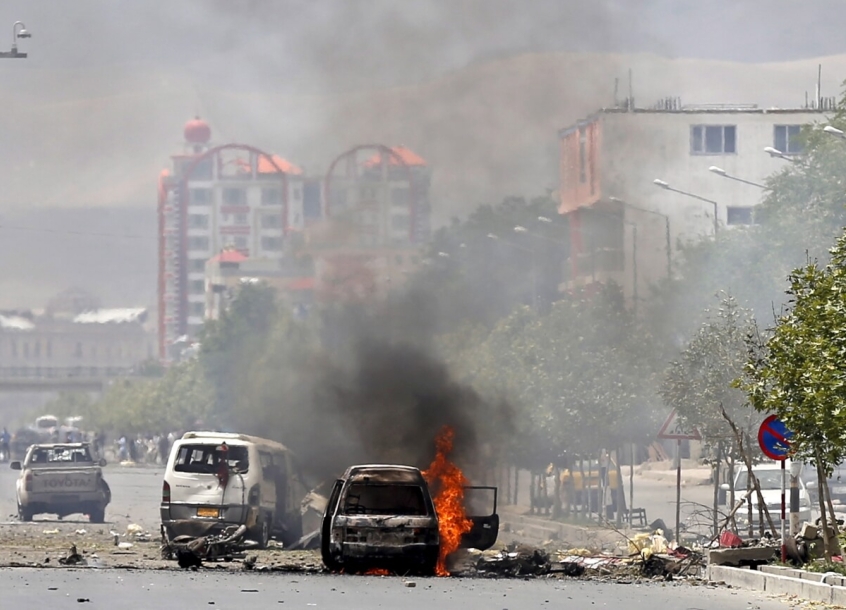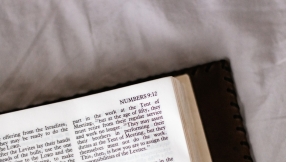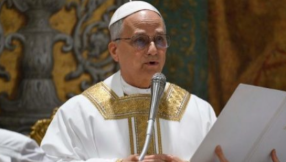
A Taliban suicide bomber and six gunmen attacked the Afghan parliament on Monday, wounding at least 19 people and sending a plume of black smoke across Kabul, as a second district in two days fell to the Islamist group in the north.
The attack on the symbolic centre of power, one of the most brazen in years, along with a series of Taliban gains elsewhere, raise questions about the NATO-trained Afghan security forces' ability to cope and how far the militants can advance.
Violence has spiralled in Afghanistan since the departure of most foreign forces at the end of last year. The insurgents are pushing to take territory more than 13 years after the U.S.-led military intervention that toppled the Taliban from power.
The attack began when a Taliban fighter driving a car loaded with explosives blew up outside parliament gates, said Ebadullah Karimi, spokesman for Kabul police, raising questions about how the driver got through several security checkpoints.
Six gunmen took up positions in a building near parliament, he said. Security forces killed the six after a gun battle lasting nearly two hours.
Kabul police chief Abdul Rahman Rahimi said all lawmakers were safe. TV pictures showed the speaker sitting calmly and legislators leaving the building, engulfed in dust and smoke, without panicking.
Four women were among the 19 wounded, said Sayed Kabir Amiri, a health official who coordinates Kabul hospitals.
Taliban spokesman Zabihullah Mujahid claimed responsibility.
"We have launched an attack on parliament as there was an important gathering to introduce the country's defence minister," he said by phone.
Lawmaker Farhad Sediqi was among several lawmakers who criticised security agencies for not preventing the attack.
"It shows a big failure in the intelligence and security departments of the government," he said.
The withdrawal of foreign forces and a reduction in U.S. air strikes have allowed Taliban fighters, who ruled Afghanistan with an iron fist from 1996 to 2001, to launch several major attacks in important provinces.
The second district to fall to the Taliban on Monday was in the northern province of Kunduz. Officials said it fell after urgently needed reinforcements failed to arrive.
The Taliban captured Dasht-e-Archi district a day after hundreds of militants fought their way to the centre of the adjacent district of Chardara.
"The Taliban managed to take it over this morning as the area has been surrounded for days," Nasruddin Saeedi, the district governor who escaped to the provincial capital, Kunduz city, told Reuters by telephone.
"They are many foreign fighters with heavy machine guns. We have asked for reinforcements, but none arrived."
Afghan soldiers were preparing a counterattack to retake both districts, another local official said.
Monday's heavy fighting was just three km (two miles) from the governor's compound.













